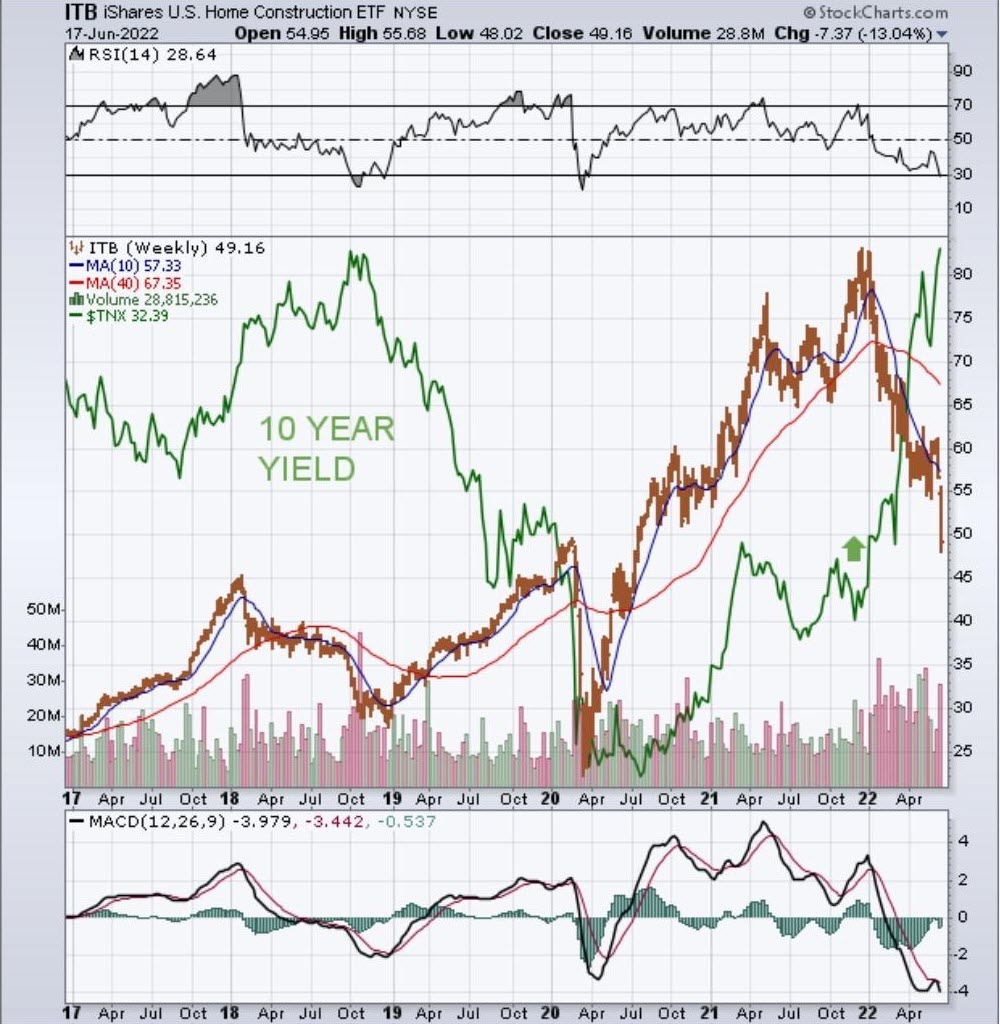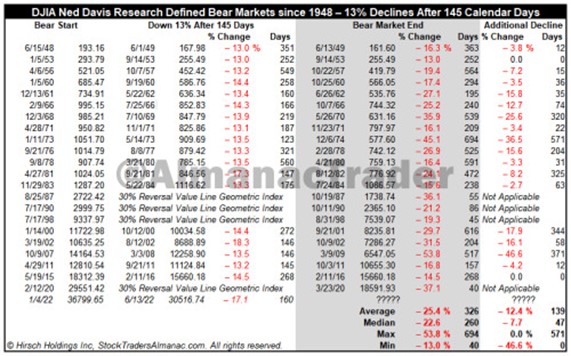The truth can be difficult to hear. Telling the truth is also hard when the message is not what the recipient wants to hear. Dealing with the truth is even harder, especially when it’s unexpected and disappointing.
This week, investors had to deal with a heavy dose of truth about the state of the economy. Based on the markets’ response, it was painfully unexpected and disappointing as demonstrated by…
…S&P 500 down -8.7%
…NASDAQ down -9.4%
…Russell 2000 (IWM) -10.8%.
Why?
Over the past few weeks, Jerome Powell and Janet Yellen have gradually admitted that they got the inflation story wrong and backtracked on their “transitory” narrative.
They’ve not only flipped their transitory inflation narrative, but also taken an aggressively hawkish point of view focused on bringing down runaway price hikes even if it risks the “R” word.
In our opinion, they’ve been forced to change their position because 90% of Americans say inflation is their number one concern.
Even a rational ‘data dependent’ Fed governor can only second-guess trending inflation data for so long.
So a somewhat unexpected and arguably disappointing moment of truth occurred on Wednesday at 2:15 EST when the Fed raised the key lending rate by not .50%, but an impressive 0.75%!
This is impressive because it is the largest one-time increase since 1994.
Plus, they broadcasted that they were likely to continue to pump the economic brakes at upcoming meetings throughout the Summer and into the Fall. All the while acknowledging their actions will run the risk of causing a recession.
Was It Enough?
0.75% is historic, however…
There were a handful of economists and asset managers that were pushing the Fed to get even tougher and raise the lending rate by 1% - 2%! They feel a bigger move was needed to let the world and the markets know they would do anything to fight insidious inflation.
The market initially liked the Fed’s recent hawkish action, as demonstrated by its rally into the close on Wednesday.
Unfortunately, after investors had 12-24 hours to consider the reality of the situation (the hard cold truth), Thursday the markets sold off and added to the rout that occurred on Monday.
Between those two days the markets shed 5% and sent the markets to new lows for 2022. The S&P 500 and the NASDAQ went back to prices we last saw in the 2020 lockdown market deep correction.
The interest rate market has been forecasting this hard truth for months now. Recently piercing the 3.0% level on 10-year Treasuries, interest rates rocketed much higher this week before pausing around 3.5%. These are levels not seen since 2018.
The S&P 500 has now wiped out all of 2021’s gains, and NASDAQ touched price levels from August of 2020.
Whether from the news media, the Federal Reserve, or The Treasury Secretary, the truth about the state of the economy has changed. There is a new reality and narrative. These truths will likely permeate the economy going forward throughout 2022 and well into 2023:
- Petroleum related products are affecting every part of the economy. Gasoline supplies are dwindling weekly, and the supply side is not likely to make these shortfalls up anytime soon.
- The Fed will do whatever it takes to slow down the economy and tackle inflation by continuing to raise rates.
- Mortgage rates on 30-year loans have skyrocketed to almost double what they were 1 year ago.
- Demand destruction will be a welcome and constructive step in fighting hyper-inflation.
- Stocks are being repriced by the market and downgraded by analysts. This will continue due to higher costs and slowing corporate growth, and lower earnings.
- The market will continue to adjust acceptable valuation levels in factors like Price Earnings multiples and Price to Sales metrics. This will exacerbate volatility in daily market activity.
- Certain areas of the economy are already feeling the pain from disruptions in global supplies (baby formula, food & gas) and are hard to control.
- The housing market is slowing dramatically (see the chart of the home construction ETF—iShares U.S. Home Construction ETF (NYSE:ITB), below).

The debate over the true cause of the current hyper-inflation will continue: Is it Biden’s new climate stance and anti-fossil fuel rhetoric? Is it the tighter and prohibitive regulatory environment?
Is it the Russian invasion of Ukraine? Is it the global supply chain disruptions coming out of the pandemic? Is inflation directly related to China’s zero tolerance stance against COVID?
The cold hard truth is that it’s a combination of all the above and more. Oil prices were on the rise long before the Russia-Ukraine incursion. Food prices have been trending up for the past several years. And labor shortages are directly attributable to the substantial number of retirements that occurred during the COVID lockdown.
We are in a tough economic environment. The Federal Reserve has boxed itself into a corner. It wants and needs the economy to slow down to do two things: reduce demand in all phases of the economy, which will relieve some of the acceleration of pricing; at the same time, keep employment and wage gains strong.
Another hard truth is that even if inflation comes down to 6% over the next 6 months, raising the Fed Funds to the targeted 2.5%-3.5% will not be enough. Many economists use the Taylor Rule, and a simple version of that premise is that rates must rise to equal or greater than the rate of inflation.
What’s Next?
BE CAREFUL. As noted above, we are in for additional volatility, resets and repricing, and unknown future Fed action. Plus, we don’t know how the gasoline shortage plays out or when the Russian-Ukraine incursion will end.
Having entered a true bear market last week, the question now is how long might we remain in a bear market? In the table below, we show past statistics from Dow Jones Industrial Average declines after 145 days beginning in 1948.
The four very quick bear markets of 1987, 1990, 1998, and 2020 are also included in the chart:

The average additional decline was 12.4% over an average of 139 calendar days. Based on DJIA’s close on June 13 and these averages, DJIA could find its bottom around Oct. 31, 2022, at 26732.13. This would represent a total bear market decline of 37.4% in 298 calendar days.
However, we point out that several bear markets ended more quickly and anything and everything is possible. However, with the Fed pointing to further aggressive action, we continue to suggest taking prudent and conservative action.
One final note: It is also possible that the Fed could be boxed into a corner where if they raise rates too much or too fast, the stock market could crash. A market crash could force the fed to back off and exacerbate already existing inflationary pressures.
Market Insights From Our Big View Service:
Risk On
- Market Internals got deeply oversold for both the S&P 500 and NASDAQ composite, but bounced and are slowly improving, displaying a bullish divergence potentially setting up by momentum not making a new low when price did this week. (+)
- Although both Value—Vanguard Value Index Fund ETF Shares (NYSE:VTV) and Growth—Vanguard Growth Index Fund ETF Shares (VUG) have gotten slammed this week, Growth stocks actually closed positive on Friday and are indicating relative outperformance on a short-term basis. (+)
- Despite all of the news about disgruntled consumers, Retail via SPDR® S&P Retail ETF (XRT) is holding on and attempting to put in a technical double bottom and is leading Mish’s Modern Family, as well as Biotech via iShares Biotechnology ETF (IBB) showing strong outperformance relative to the rest of the market based on our Triple Play indicator. (+)
Risk Off
- Stocks closed down sharply this week, approximately -6% on average for the 4 key indices. (-)
- IWM has broken down through its long-term 200-week moving average, with Real Motion also breaking and confirming a deeper breakdown of the long-term positive trend. (-)
- Every market sector that we track was down at least -4.3% over the past 5 trading days, with Energy (XLE) -17.1% being the worst performer, however, our ETF Sector model exited a levered ERX position for a 100% profit on 5/27. (-)
- Consumer Staples (XLP) -4.3% was the best performing sector this week, confirming a risk-off situation as well as the impact of inflation on the average consumer. (-)
- The major theme this week was that the Energy sector got slammed across the board, with significant losses in Natural Resources (IGE), Energy (XLE), Oil Services (OIH), Natural Gas (UNG), and Oil & Gas Exploration (XOP). (-)
- The New High / New Low ratio for both SPY and the NASDAQ composite continues to deteriorate. (-)
- Risk Gauges are still Risk-Off across the board. (-)
- The number of stocks above key moving average is very weak, with all moving averages breaking down to extremely low levels and not improving. (-)
- Interest rates are in a mean reversion bounce, however, are still in a long-term downtrend with the 50-day moving average serving as important overhead resistance for short, intermediate, and long-term treasury bonds. (-)
- The 3–10-year part of the Yield Curve is inverted, an indication of recessionary pressures. (-)
- Despite the correction in Energy, Oil (USO) is still in a bull trend after being overbought and mean reverting. (-)
- The collapse of the Japanese yen (FXY) demonstrates structural issues in the global banking system. (-)
Neutral
- Although Gold is strongly outperforming the market according to the Triple Play indicator, the chart is a mess and there is no definitive technical indication of trend. (=)
